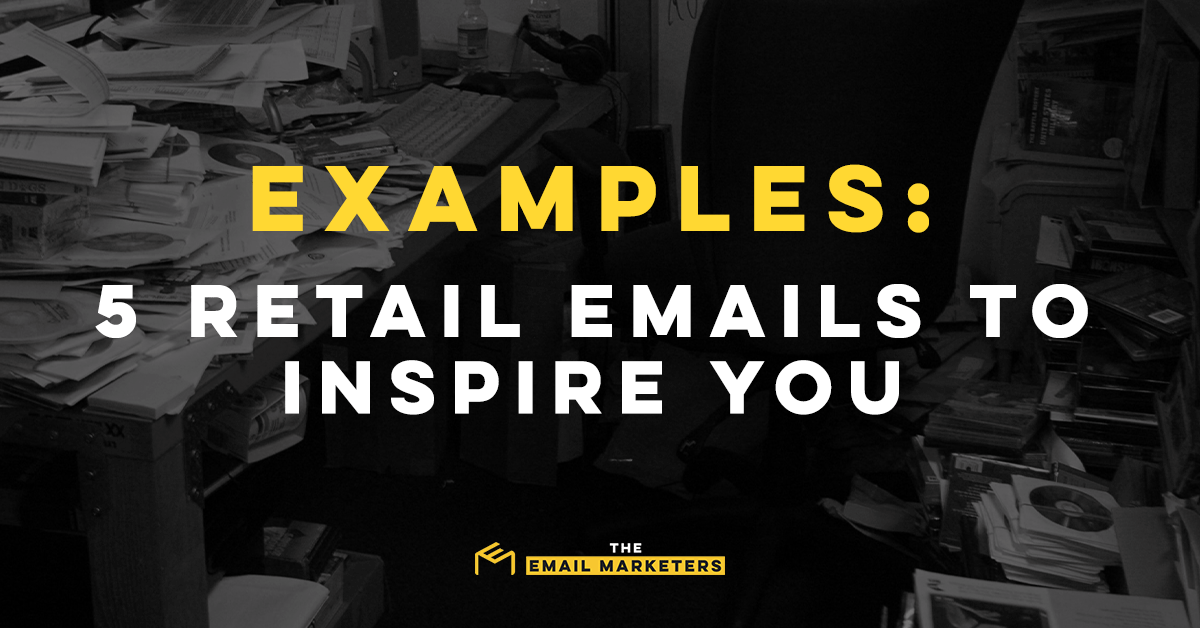Email Marketing 101: What Is an Email Marketing Audit?
As with any form of digital marketing, email marketing requires regular check-ins. Brands should always know how their campaigns perform — for better or worse! Otherwise, your email marketing strategy is little more than a guessing game.
That’s why marketing professionals use email marketing audits. Think of them as annual check-ups for your email strategy.
Today, I’ll be discussing how these critical check-ins work!
What Is an Email Marketing Audit?

I’ll start with the basics.
An email marketing audit is one of many checks and balances for your email marketing strategy. It is both a checklist of your email marketing campaigns and a measurement of their performance. A comprehensive email marketing audit should include every flow along your customer journey, and each of those flows should have associated key performance indicators. However, you can also have smaller email audits, which may include only a portion of your overall customer journey.
How Often Should an Email Marketing Audit Be Performed?
Most companies run annual email marketing audits. This predictable schedule gives campaigns enough time to “mature” and gather relevant data. More importantly, it establishes a sense of stability. An annual auditing process gives marketers concrete data and benchmarks for those valuable insights.
Failing to run regular email marketing audits poses an obvious problem. It places the entire email marketing team at a disadvantage, preventing them from seeing a holistic view of their marketing strategy. In particularly problematic situations, brands may even suffer sender reputation damage from unchecked email problems.
Nonetheless, running audits too frequently can be just as troublesome. As an extreme example, assume that a brand runs an audit every few weeks. Its campaigns won’t be established enough to show worthwhile statistical changes. Practically, the brand is also wasting money on costly, in-depth email audit processes.
What Are the Benefits of Email Marketing Audits?

Now, don’t take my words out of context!
Email marketing audits are essential. They prevent your marketing emails from souring and ensure a successful email marketing strategy. In many ways, they serve as your strategic checklist, giving your marketing crew up-to-date lists of what to fix.
Improve Your Email Metrics
The most palpable perk of an email audit is its comprehensive review of your email marketing efforts.
A successful email marketing audit delivers a cohesive, monolithic vision of your email performance. It’s the marketer’s one-man band, although it deals in numbers and data rather than bells and whistles! That data becomes a brand’s yearly goalpost, shaping the next 365 days of email marketing efforts.
Review Your Content
Metrics aside, an annual email audit is the perfect time to review your brand’s marketing content.
Most annual audits are all-inclusive, covering every email flow. Some may even evaluate performance for individual automated emails and one-off campaigns. Either way, an email audit is the perfect time to review and tweak your marketing plans. After all, you’re already compiling a list of email campaigns!
(You should carefully examine your email performance metrics before scaling your campaigns, though!)
Update Your Compliance
An annual comprehensive email marketing audit will also give marketers time to review the meat of your campaigning, so use the time wisely! Double-check your legal and technical compliance whenever you conduct an email marketing audit. You’ll save yourself from a much bigger headache down the road.
For the best results, I — personally — always ask myself the following questions:
- Am I maintaining a high sender score? Aim to maintain a high sender reputation and avoid spam filters.
- Am I using effective language? A well-devised call to action (CTA) can make or break an email campaign’s performance. At the same time, you must balance showmanship and transparency.
- Are my email marketing efforts working as intended? Your email content should be functional. Take even greater care when managing your transactional emails, as broken links in these post-purchase flows will significantly damage your consumers’ trust.
- Do my email campaigns meet all legal requirements? The CAN-SPAM Act, CCPA, and GDPR are your “Big Three.”
It may be a bit of an afterthought, but it’s no less important than buffing up your metrics!
The Email Marketing Audit Checklist

However, you can’t reap the benefits without the requisite work.
Your email marketing platform of choice probably has a handy tool to compile and display data. It may even have email testing tools designed specifically for email audits. But you must tell the program what you want to see.
1. Identify Your Email Campaigns
Every email marketing audit must begin with a list of campaigns.
The simplest solution is to request data for every email campaign sent in the past calendar year. However, this all-inclusive approach can prove problematic for more prominent brands with many, many more active email campaigns.
Ideally, you’ll want to restrict your criteria and audit emails your marketing team deems “essential.” Alternatively, you can compile your data into two separate reports for perennial and one-off campaigns. This separation will improve your team’s understanding of your overall email marketing strategy.
Usually, an email marketing audit involves summarizing campaigns as simple one-line entries. You don’t necessarily have to include the subject lines of every email, as doing so would make your results unwieldy. However, you should certainly consider the impact of those subject lines.
For the sake of clarity, I’ve whipped up a small sample email audit report.

Notice how each campaign is neatly nested under its overarching flow. (In this example, I provided three flows: onboarding, post-purchase, and new product launch.) After summarizing each flow’s averages, the report then lists the individual campaigns using simple one-line descriptions, such as:
- “Welcome Email & Introduction”
- “Brand Information & Story”
- “Receipt & Confirmation”
- “Shipping Confirmation”
- “Product Announcement”
- “Product Story & Information”
Organizing your results like this improves efficiency and helps you cultivate well-rounded email marketing practices.
2. Email Metrics and Goals
Next, you’ll need your email metrics. These will vary according to your goals. A brand seeking to improve its customer relationship management won’t use the same data as a company with a burgeoning email marketing program.
Nonetheless, you’ll see some similarities. Most email audits cover the following aspects of marketing performance:
- Click-through rates
- Conversion rates (and similar interaction metrics)
- Email deliverability (including spam complaints and bounces)
- Engagement rates
- Open rates
- Spam complaints
- Unsubscribe rates
You really shouldn’t track all these metrics; that would give you a headache! Instead, pare your data down to the most relevant and invaluable insights. Otherwise, you’ll find yourself handling a massive, incomprehensible spreadsheet of irrelevant information.
3. Compliance Checks
A comprehensive email marketing audit should also include a compliance check for your most important emails. This part of the process probably won’t require much numeric data, but you’ll need to investigate your email templates. Scrutinize every bit of your email campaigns — including that pre-header text — and double-check that you’ve fulfilled the “Big Three” essentials: deliverable, legal, and technical.
Í’ve already discussed legal compliance and outlined the importance of email deliverability. So, instead, allow me to briefly discuss technical compliance.
Nobody wants to receive a broken email. Thus, when conducting an email marketing audit, you’ll want to double-check that everything works as intended. Failing to do so will damage your conversion rates and scare away your audience. I always suggest checking areas for broken email content:
- Email Design: An outdated or poorly optimized email template can ruin the best campaigns. Always use reactive mobile-first designs to create emails with cohesive visual appeal.
- Fallbacks: Accessibility and compatibility matter. Regardless of your target audience, your content should always include plain-text fallbacks. Your subscriber list and email service provider will thank you later — probably when those older interactive AMP emails start breaking!
- Implementation: Despite being a necessity, nobody wants to see those automated filler blocks leave workflow automation. Avoid embarrassment by testing your dynamic content blocks and reaffirming their functionality whenever you conduct an email marketing audit.
- Links: It may seem silly, but as a great singer and philosopher once said, “Everyone makes mistakes.” Your automated campaigns may look great; a comprehensive audit should ensure they work great.
4. Email Hygiene Check
Finally, you’ll need to check your list hygiene.
That does not mean you offer your subscriber list a bath! (Unless, perhaps, you’re a shower and tub installer!) It means that you should look at your email analytics and re-evaluate your segments.
Proper list hygiene is complicated. I won’t dissect the details here, but I’ll summarize the process: At its core, list hygiene aims to prune inactive subscribers and reward engaged users. Most email clients and marketing automation platforms include tools to streamline this portion of your email audit checklist. Nonetheless, it’s worth a second look!
This process has three primary goals and benefits:
- Improve Deliverability: Reaffirming that you use accurate sender information and follow email authentication protocols will lower your spam complaint rate. It also improves your standing with your email service provider.
- Increase Relevance: Removing inactive readers from your list promotes more accurate data. With those disinterested consumers gone, you can focus on crafting more relevant content.
- Reduce Spending: Polishing those email analytics also has a financial payoff! Every email you send costs something, even if it’s a fraction of a cent. By removing inactive users, your brand reclaims that cash.
Why You Should Leave the Email Audit to the Pros

Now, with that said, here’s my call to action: Leave the audit work to the pros!
A cohesive, successful email marketing audit requires time and expertise. You can certainly try to run your own audit, but your email marketing performance probably won’t get the same boost.
The reasons for this result are multitudinous, although they boil down to a lack of industry insight. Few business owners know email marketing well enough to pinpoint the tiny details that make or break email campaigns. Even fewer will have the time and knowledge necessary to develop worthwhile solutions from those numbers.
An Example of a Marketing Audit From the Pros
So, indulge me. Allow me a few more minutes of your time.
Remember that mock-up marketing audit? If not, take another look. Let me briefly demonstrate the power of an insightful, professional marketing audit.

Immediately, as an email expert, I’ll focus on two sore spots: the onboarding and the product launch campaigns.
What the Email Marketing Audit Says
For the welcome campaign, the list segmentation strategy is irrelevant. Focus, instead, on the steep unsubscribe rate spike from the first email. It’s obviously not the desired action, but what could have caused this?
Perhaps the call-to-action text was weak. Or, maybe the email design was lacking. However, judging from the presence of a discount offer, I have a more salient suggestion.
Subscribers expected a discount and didn’t get one. Simply moving that initial code into the first email will likely lower the unsubscribe rate and boost conversion rates.
The same is likely true for the new product launch. The email content probably suggested subscribers would receive a discount. Instead, they got a product story.
Let The Email Marketers Conduct an Email Marketing Audit for You
That expertise can be yours!
My team of pros at The Email Marketers understands the intricacies of conducting an email marketing audit. They know how to change the way subscribers engage with your content. And they’re eager to help your business succeed.
Let us help you.
Schedule a free strategy session to learn how a professional email audit can transform your digital marketing.



































































































